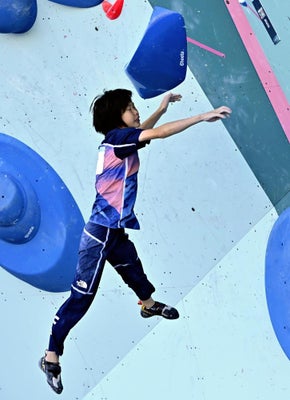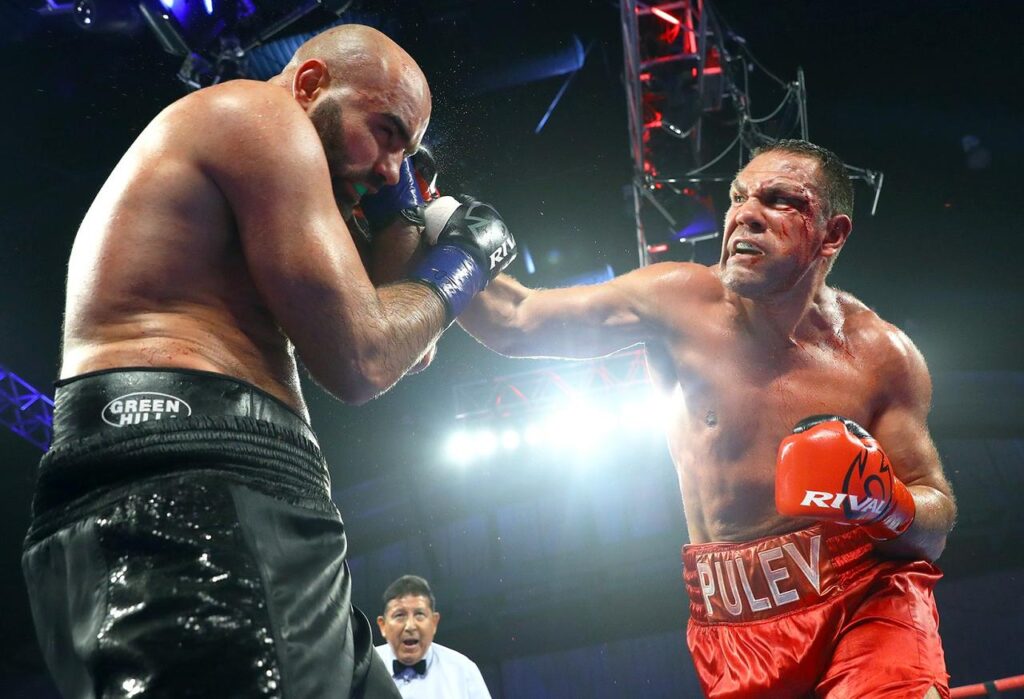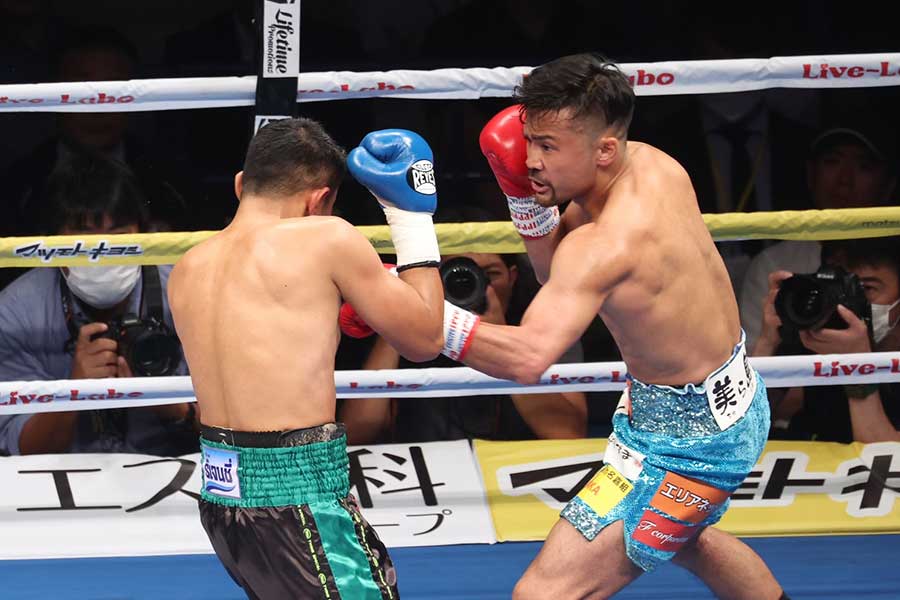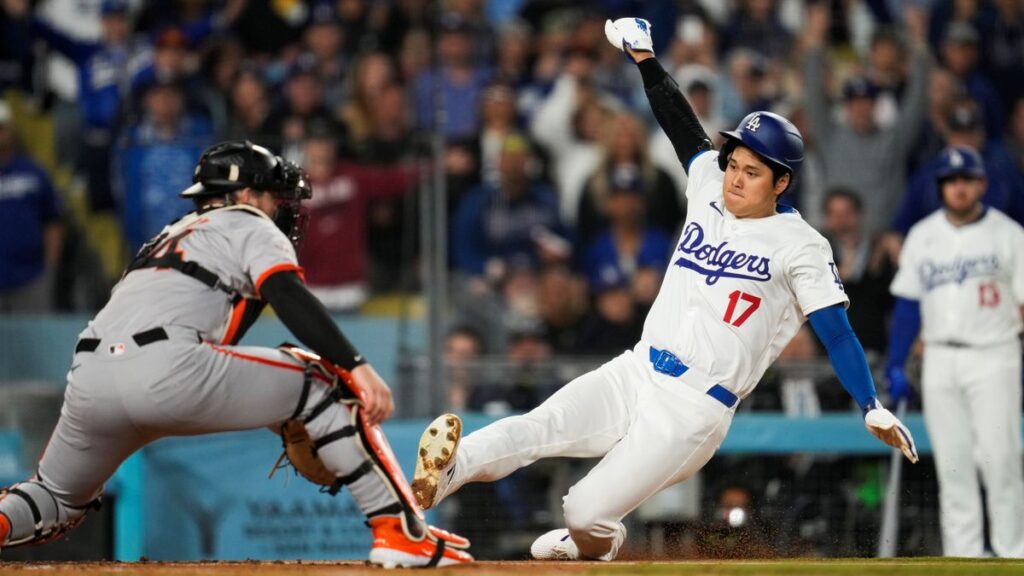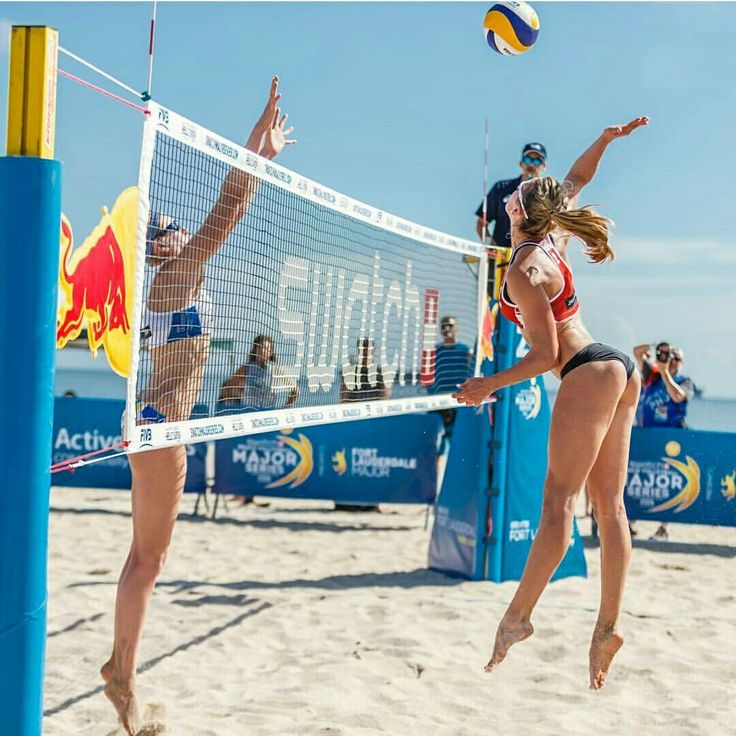
In order to score points in beach volleyball and control the flow of the match, powerful and accurate spikes are essential.
Spiking is an art that requires more skill and strategy than just hitting powerful shots.
In this article, we will explain step-by-step how to effectively hit spikes in beach volleyball, from the basics to advanced techniques.
All players, from beginners to advanced players, will find tips and exercises to improve their spiking technique.
Get practical advice and training to take your beach volleyball game to the next level.
Now master the spike in beach volleyball and make your game even more exciting.
目次
Introduction: The importance of beach volleyball spikes
Spikes in beach volleyball are not only a source of points, but also an important element that provides a strategic advantage in the game.
This technique is a powerful means of putting pressure on the opposing team and can change the course of the match.
A properly executed spike can destroy the opponent’s defense and motivate your team.
Spike’s success relies heavily on timing, teamwork, and understanding of strategy, as well as the player’s technical ability.
If a player masters the approach, jump, and strike stages, and can combine them fluidly, it will be possible to unleash powerful spikes that are difficult to block.
Spikes also have psychological effects.
Powerful spikes can intimidate the opposing team, causing hesitation and mistakes in their play.
On the other hand, it can be a great source of confidence and energy for your team.
The importance of spikes in beach volleyball is immense, and successful beach volleyball players are able to hone this technique and use it skillfully as part of their tactics.
Improving your spike technique is an essential step for beach volleyball players to take to the next level, and this guide will explore specific methods and strategies for doing so.
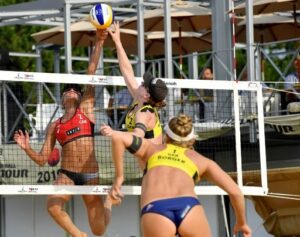
Spike basics
Spikes in beach volleyball are an important technique that determines the outcome of the match.
Successful spiking is highly dependent on learning correct form and understanding timing and approach.
Here, we will explain in detail the basic elements for mastering spikes.
Basic form of spike
Spike form is essential to effective hitting. By spiking with the correct form, you will be able to unleash a powerful attack into your opponent’s court.
- Approach : The approach is a key factor in determining the power and accuracy of the spike. Generally, you start with small steps and accelerate with the second and third larger steps. At this time, it is important to adjust the direction of your body for the final jump.
- Jump : Use the momentum of your run-up to jump higher. By swinging both arms wide, you can spike from a higher position.
- Swing : Pull your arm back until you hit the ball, then swing it forward with all your might. Make the most of your shoulder rotation and arm swing to create a strong impact on the ball.
- Follow-Through : Increase direction and stability of the spike by allowing your arm to swing forward naturally after you hit the ball.
Basics of timing and approach
A well-timed approach to the ball is essential for a successful spike.
- Observe the ball : Always be aware of the setter’s setup and accurately read the trajectory of the ball. This will determine the timing of your approach.
- Timing of the approach : Ideally, the approach should start shortly before the set ball reaches its highest point. Too fast and you won’t be able to sustain the power, too slow and you won’t be able to reach the ball high enough.
- Approach Speed and Rhythm : Start the approach slowly and increase speed during the last two steps. This acceleration creates jump height and leads to a powerful spike.
Mastering the basics of spikes is extremely important in improving your beach volleyball skills.
A better understanding of proper form and timing will make your spikes a more effective weapon.
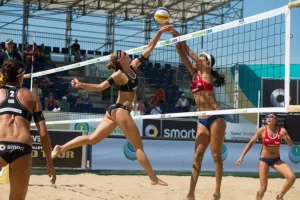
Improving spike technology
Spiking in beach volleyball requires more than just hitting the ball with force; it also requires precision in technique and timing.
In order to hit a powerful spike, you need to hone a series of movements, from approach to jumping to hitting.
Here, we’ll give you tips on how to improve your spiking technique, as well as a detailed explanation of approach and jumping techniques.
Tips for hitting powerful spikes
- Strengthen your core : A strong core is essential for powerful spikes. Strengthening your core muscles increases your stability when jumping, allowing you to hit the ball from a higher position.
- How to use your arms : When spiking, it is important to use your entire arm from your shoulder to transmit power to the ball, not just your arm. Use the rotation of your shoulders and imagine swinging your arms down like a whip.
- Maintaining line of sight : When spiking, it is important to keep in mind not only the ball, but also the layout of the opponent’s court. Effective spikes depend not only on the strength of the ball, but also on the accuracy of where you hit it.
approach and jumping techniques
- Approach Rhythm : The approach run follows a slow-fast-fast rhythm. Start small with the first steps and accelerate with the last two steps to build momentum for the jump. This rhythm allows for smooth approaches and high jumps.
- Timing of the jump : The best time to jump is just before the set ball reaches its apex. If you jump too late, the ball will fall too far, and if you jump too early, you’ll miss the perfect spot.
- Foot position : When jumping, plant your feet firmly on the ground and use your ankles, knees, and hips to propel yourself up. This movement creates a powerful jump using the entire body, allowing you to spike from a higher position.
In order to improve your spiking technique, it’s important to incorporate and repeat these basic tips and techniques into your daily practice.
The ability to spike powerfully and tactically is the key to success in beach volleyball.
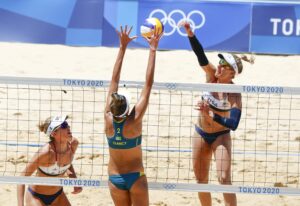
applied techniques
Spiking in beach volleyball requires not only strength but also tactical depth to outwit your opponent.
Here, we will explain smart spike tactics to make fun of your opponent, as well as the types of effective breaking ball spikes and how to use them.
By mastering these applied techniques, you will be able to obtain more diverse attack options and advance the match to your advantage.
Smart spike tactics to outwit your opponent
- Reading Spike : Predict your opponent’s movements and aim for a spike that will counter them. For example, when your opponent is preparing for a powerful spike and is solidifying their defense, you can intentionally play weak shots or play directly to stop your opponent.
- How to use the line and cross : Look at the position of the opposing defender and spike either the line (along the sideline) or the cross (diagonally across the court). At this time, the key is to not change the direction of your body until just before hitting the ball, and to change direction at the point of impact.
- Delayed Spikes : By changing the rhythm of your approach or by shifting your timing, such as waiting a moment at the top of a jump before hitting, you can throw off the opponent’s blocker’s timing.
Types of breaking ball spikes and how to use them
- Roll Shot : Make a powerful spike, then use your wrist to hit the ball with a slight rolling motion. This shot is effective when the opponent is backing up or when the defense is stiff.
- Cut shot : A technique in which the ball is lightly cut diagonally forward. It’s especially effective when there are no blockers or when you aim for empty spaces near the sideline.
- Pokie Shot : A technique in which you use your fingers to poke the top of the ball, aiming for the top of the blocker’s hand or the gap between the balls. Can be used as a precision shot when the defender is far away.
It is important to practice these applied techniques and simulate their use in matches.
The key to winning a beach volleyball game is to use tactical spikes to outwit your opponent and to use breaking ball spikes according to the situation.
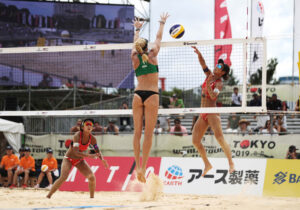
Training to improve spikes
Proper physical training and practical practice are necessary to increase the power of your spikes and improve your performance in matches.
Here, we will introduce physical training to improve your spike power and practice menus that will be useful in actual play.
By performing these trainings regularly, you can significantly improve the power and accuracy of your spikes.
Physical training to increase spike power
- Lower Body Strength : Powerful spikes require strong leg strength. Do exercises that strengthen your lower body, such as squats, lunges, and box jumps. These also help improve your jump height.
- Core Training : Core strength is directly linked to spike stability and power. Build core strength with exercises like planks, Russian twists, and leg raises.
- Strengthen your upper body : In order to develop the strength needed to swing your arms, you will also train your upper body in a well-balanced manner with push-ups, dumbbell presses, pull-ups, etc.
- Approach practice : Practice the series of movements from run-up to jump and swing repeatedly to develop a fluid and smooth approach. By practicing varying the speed and rhythm of your approach, you will be able to respond to a variety of situations.
- Target practice : Set up targets on the court and practice hitting specific areas with your spikes. This can improve spike accuracy.
- Block countermeasure practice : By placing blockers and practicing spiking while actually being blocked, you can learn techniques to dodge blocks and accurately spike under pressure.
Through these training and practice menus, you can not only improve your spiking technique, but also improve your decision-making ability during matches.
A combination of regular training and practical practice is the key to taking your beach volleyball spikes to the next level.
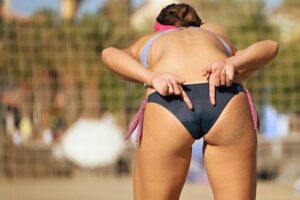
Summary: Points for improving effective spiking technique
Spikes in beach volleyball are an important source of points in matches and are a powerful means of putting pressure on the opposing team.
Improving your spiking technique can definitely be achieved through practice and training.
Here, we will summarize the important points to effectively improve your spike technique.
grasp the basics
- Learn correct form : Master the basic form of the spike so you can accurately perform the approach, jump, and strike sequence.
- Timing and Approach : Adjust the rhythm of your run-up and the timing of your jump so you can hit the spike at the optimal point.
Strengthening physical strength and technique
- Physical training : Focus on strengthening your lower body, core training, and upper body strength training to support your spike power.
- Practical practice : Learn a variety of spiking techniques by incorporating useful practice menus such as approach practice, target practice, and block countermeasure practice.
Development of applied technology
- Tactical Spikes : Learn about smart spike tactics to outwit your opponents, the types and uses of curveball spikes, and apply them in your matches.
- Improve your situational judgment : Learn how to read your opponent’s movements during a match and choose the best spikes.
Continuous reflection and improvement
- Video Analysis : Analyze videos of your spikes and matches to find areas for improvement. Also, learn about the cleats of professional players and incorporate the good points.
- Use feedback : Be open to feedback from your coaches and teammates to continually improve your skills.
Effective spiking technique improvement is achieved by consistently practicing these points.
Being faithful to the basics while always having the flexibility to incorporate new techniques and tactics will lead to growth as a beach volleyball player.
